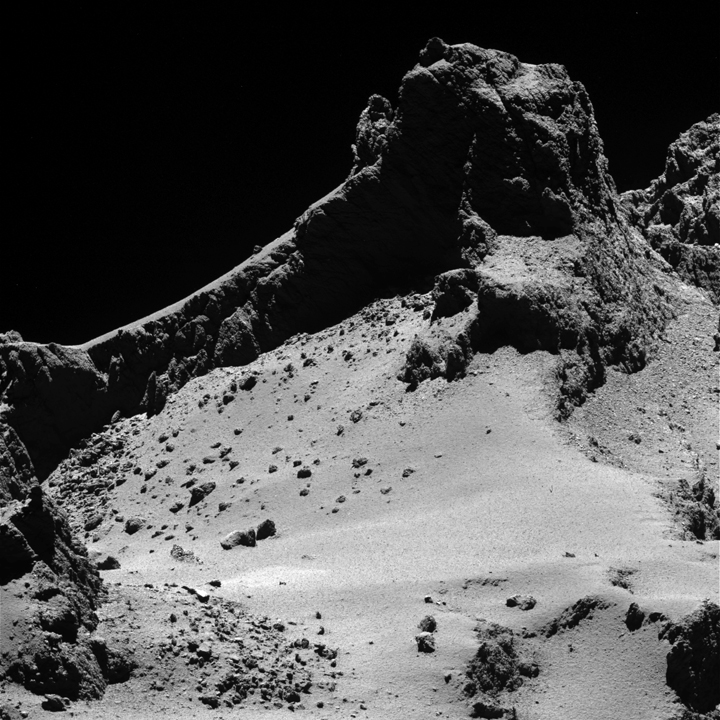BERLIN – Scientists have found further evidence that comets harbour the building blocks of life, and have collected the first close-up data that will help them understand how these celestial bodies evolve as they hurtle toward the sun.

READ MORE: 5 cool things about the Rosetta mission
The discoveries are the result of months of observation by instruments aboard Europe’s Rosetta space probe, which has been flying alongside comet 67P/Churyumov-Gerasimenko since August. They are detailed in seven papers published Thursday by the journal Science.
“These papers collect the first results, our first scientific analysis of the comet, and set us up for the next year alongside the comet,” said project scientist Matt Taylor.
While much of the public attention has been on the fate of the small lander that successfully touched down on 67P in November but soon fell silent, scientists say the bulk of their data will be collected by Rosetta itself.
The probe is set to accompany 67P as it swings round the sun, growing increasingly active over the next seven months as it heats up due to solar radiation.
READ MORE: Rosetta probe findings suggest Earth’s water did not come from comets
Among the early discoveries are that the comet has dune-like structures made by the dust it releases, and a more porous centre than previously assumed.
67P also appears to be losing water through the ‘neck’ that connects its two ball-shaped ends and contains less ice on its surface than expected.
One of the most exciting findings, though, is the discovery of a surface covered by complex mixtures of organic materials possibly containing carboxylic acids, which also occur in amino acids — essential components for life.
Although carboxylic acids have been previously found in cometary materials, it is the first time they have been discovered on a comet’s nucleus surface, said Fabrizio Capaccioni, a scientist at Italy’s National Institute for Astrophysics in Rome.
According to Capaccioni’s team, these organic compounds were present when the comet formed out of primordial material more than 4 billion years ago.


Comments